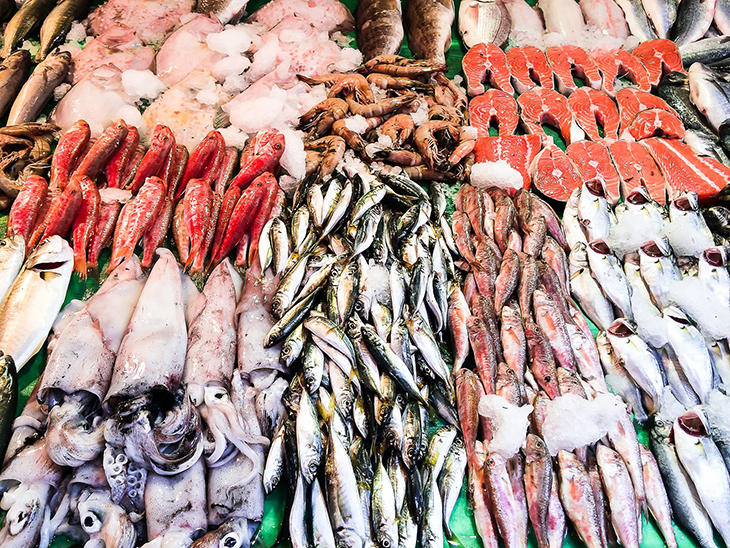
An article featured in the journal Science of the Total Environment explores the repercussions of lingering toxins in aquatic creatures, shedding light on their potential to jeopardize food safety, security, and human health.
Background
The aquatic environment is extremely vulnerable to the effects of climate change and various environmental stressors, including persistent pollutants. Contamination of the ocean environment can lead to significant changes in its biological, physical, and chemical characteristics, resulting in severe consequences for marine ecosystems and wildlife.
Spanning approximately 28% of the Earth’s surface, the Pacific Ocean ranks among the world’s five largest and deepest oceans. Between 2003 and 2012, there was a notable 50% increase in the influx of chemical contaminants into the Pacific Ocean. This escalating pollution poses a substantial global public health concern due to its substantial impacts on food safety, food security, and human well-being.
Residual Toxins Found in the Pacific Ocean
Aquatic residual toxins can be categorized into two distinct groups based on their origins: marine biotoxins and those associated with human activities. Harmful Algal Blooms (HABs), generated by dense aggregations of unicellular algae, produce marine biotoxins that can accumulate in various marine organisms, including tunicates, echinoderms, gastropods, fish, and filter-feeding fauna.
Recent evidence highlights a spatial rise in HABs, particularly in the Asia-Pacific and North-Pacific regions, attributed to climate change and human-induced activities. However, a significant temporal increase in HABs has not been conclusively documented yet.
Cyanobacteria, a type of bacteria, obtain energy through photosynthesis and produce secondary metabolites known as cyanotoxins. Among these, saxitoxins and microcystins are extensively studied. Cyanotoxin production by cyanobacteria has surged in many global regions, including the Pacific Northwest.
Emerging concerns revolve around persistent organic pollutants, heavy metals, and microplastics. These pollutants primarily originate from sources such as factories, hospitals, households, agricultural runoff, and landfill leachates.
In recent years, interventions like the Stockholm Convention have effectively reduced the release and subsequent accumulation of persistent organic pollutants in aquatic organisms. However, there has been a significant upswing in microplastic pollution, with plastic waste constituting the majority of marine litter. Current estimates suggest an annual release of approximately 12.7 million tons of plastics from the mainland into the ocean.
Nonbiodegradable and toxic heavy metals, including mercury, enter aquatic environments mainly through agricultural runoff. These metals tend to accumulate in aquatic organisms and move up the food chain. Human activities have substantially elevated mercury emissions in the environment, posing a significant threat to aquatic ecosystems and the organisms within them.
Animal Exposure to Toxins in the Pacific Ocean
Microplastics, minute particles of plastic measuring less than 5mm, have emerged as significant aquatic pollutants, profoundly impacting a diverse array of marine life, from tiny plankton to large marine animals. The North Pacific Ocean, in particular, has witnessed an alarming surge in polybrominated diphenyl ethers within the adipose tissue and stomachs of seabirds, attributed to their ingestion of microplastics.
Deep-sea creatures dwelling at the Pacific Ocean’s floor are grappling with the perils of microplastic accumulation, leading to diminished survival rates and threatening species populations. Moreover, in regions like the Eastern and Northern Pacific Ocean, a myriad of aquatic species exhibit disturbingly high levels of microplastics in their digestive systems, indicating the pervasive nature of this crisis.
A profound consequence of this pollution is evident in the analysis of fish species sourced from markets in Indonesia and California. These studies have unveiled alarming quantities of plastic debris and synthetic fibers within the fish. These contaminants wreak havoc on marine life, disrupting their endocrine, immune, and reproductive systems, posing a threat to the very core of their existence.
Apart from microplastics, the marine ecosystem faces an additional threat from toxic chemicals like polychlorinated biphenyls (PCBs). These chemicals, released into the marine environment, have dire consequences for marine mammals such as dolphins and whales. The mode of entry for these toxins is diverse – through contaminated food, water, or even air. Once inside the marine animals’ bodies, these chemicals wreak havoc on their endocrine and digestive systems, creating a cascade of disruptions that imperil these majestic creatures and the delicate balance of marine ecosystems.
Effects of Residual Toxins on Health
Recent data shows a notable surge in per capita fish consumption, climbing from 9 kg in 1961 to 20 kg in 2018. While this trend indicates a higher demand for seafood, it also raises concerns about the quality and safety of aquatic products. Contaminated seafood, particularly fish, poses significant risks to human health. The presence of residual toxins disrupts the delicate balance between food supply and demand, impacting marine animal health and survival.
When humans ingest contaminated seafood, these residual toxins accumulate in their bodies, leading to various health complications. For instance, paralytic shellfish poisoning, resulting from Harmful Algal Bloom (HAB) toxins, can cause severe consequences like cardiovascular shock or respiratory paralysis. Cyanotoxins, another group of harmful substances, affect multiple human organs, including the liver, nervous system, skin, and digestive system. Symptoms of cyanotoxin poisoning range from diarrhea and muscle tremors to abdominal pain and skin irritation. Moreover, cyanotoxins have been linked to the development of primary liver cancer.
Persistent organic pollutants, found in contaminated seafood, can cause chronic health issues, including congenital disabilities, cardiovascular problems, and immune complications. These pollutants also increase the risk of cancers and disrupt reproductive and endocrine systems in humans.
Heavy metals present in aquatic animals, such as mercury, cadmium, and arsenic, are highly toxic and pose fatal consequences for humans. Mercury, in particular, biomagnifies along the food chain, making it a significant concern. Cadmium and arsenic adversely affect reproductive and nervous systems, adding to the dangers associated with consuming contaminated seafood.
Given the serious health risks linked to contaminated seafood, efforts to protect aquatic life and human consumers have intensified. One promising approach involves the use of artificial intelligence and machine learning methods. These technologies can predict pollution sources, assess pollution levels, and identify signs of contamination in seafood products. By leveraging these advanced tools, authorities can enhance their monitoring and control measures, ultimately safeguarding both marine ecosystems and human health from the adverse effects of consuming contaminated seafood.



